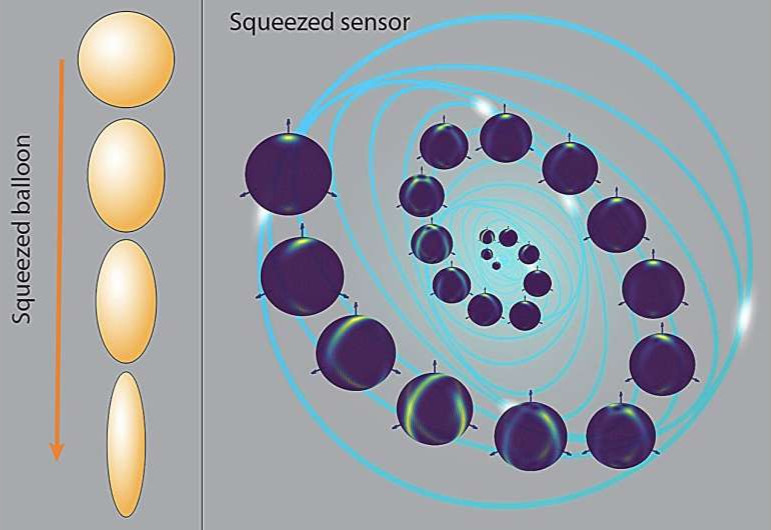Exploiting Quantum Squeezing to Enhance Precision of Measurements in Systems With Multiple Factors
September 27, 2024 -- Quantum squeezing is a concept in quantum physics where the uncertainty in one aspect of a system is reduced while the uncertainty in another related aspect is increased.
Imagine squeezing a round balloon filled with air. In its normal state, the balloon is perfectly spherical. When you squeeze one side, it gets flattened and stretched out in the other direction. This represents what is happening in a squeezed quantum state: you are reducing the uncertainty (or noise) in one quantity, like position, but in doing so, you increase the uncertainty in another quantity, like momentum.
However, the total uncertainty remains the same, since you are just redistributing it between the two. Even though the overall uncertainty remains the same, this "squeezing" allows you to measure one of those variables with much greater precision than before.
This technique has already been used to improve the accuracy of measurements in situations where only one variable needs to be precisely measured, such as in improving the precision of atomic clocks. However, using squeezing in cases where multiple factors need to be measured simultaneously, such as an object's position and momentum, is much more challenging.

In a new paper published in Physical Review Research, Tohoku University's Dr. Le Bin Ho explores the effectiveness of the squeezing technique in enhancing the precision of measurements in quantum systems with multiple factors. The analysis provides theoretical and numerical insights, aiding in the identification of mechanisms for achieving maximum precision in these intricate measurements.
"The research aims to better understand how quantum squeezing can be used in more complicated measurement situations involving the estimation of multiple phases," said Le. "By figuring out how to achieve the highest level of precision, we can pave the way for new technological breakthroughs in quantum sensing and imaging."
The study looked at a situation where a three-dimensional magnetic field interacts with an ensemble of identical two-level quantum systems. In ideal cases, the precision of the measurements can be as accurate as theoretically possible. However, earlier research has struggled to explain how this works, especially in real-world situations where only one direction achieves full quantum entanglement.
This research will have broad implications. By making quantum measurements more precise for multiple phases, it could significantly advance various technologies. For example, quantum imaging could produce sharper images, quantum radar could detect objects more accurately, and atomic clocks could become even more precise, improving GPS and other time-sensitive technologies.
In biophysics, it could lead to advancements in techniques such as MRI and enhance the accuracy of molecular and cellular measurements, improving the sensitivity of biosensors used in detecting diseases early.
"Our findings contribute to a deeper understanding of the mechanisms behind the improvement of measurement precision in quantum sensing," adds Le. "This research not only pushes the boundaries of quantum science, but also lays the groundwork for the next generation of quantum technologies."
Looking ahead, Le hopes to explore how this mechanism changes with different types of noise and explore ways to reduce it.




































